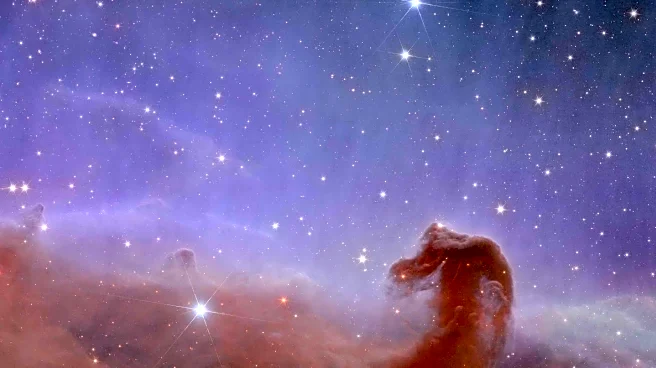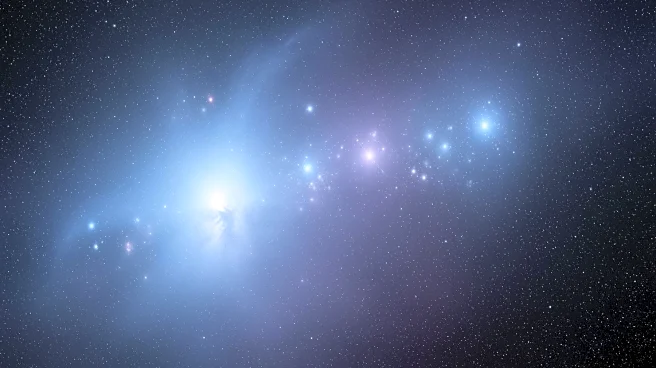What's Happening?
Astronomers are drawing attention to the Pegasus constellation, which occupies a prominent position in the autumn night sky. The constellation is characterized by the Great Square, formed by four bright
stars, and serves as a starting point for stargazers to explore the colors of stars. The Great Square is part of both the Pegasus and Andromeda constellations, with Alpheratz marking a corner shared by both. The constellation has been creatively used to map out a celestial baseball game, with stars representing bases and players. This imaginative approach was popularized by astronomer Henry Neely, who worked at the Hayden Planetarium and outlined the concept in his 1946 book 'A Primer for Star Gazers.'
Why It's Important?
The focus on Pegasus and its Great Square provides an engaging way for astronomy enthusiasts to connect with the night sky. By using familiar concepts like a baseball diamond, astronomers can make stargazing more accessible and enjoyable, encouraging public interest in astronomy. This approach also highlights the cultural and educational value of constellations, which have been used historically to tell stories and navigate. The creative mapping of constellations can inspire new generations to explore astronomy and appreciate the scientific and artistic aspects of the cosmos.
What's Next?
As the autumn progresses, stargazers can continue to observe Pegasus and other constellations that are favorably positioned in the night sky. The educational programs at planetariums and observatories may incorporate these creative interpretations to enhance public engagement. Additionally, the ongoing interest in constellations could lead to more innovative ways to teach astronomy, potentially integrating technology like augmented reality to visualize celestial patterns.
Beyond the Headlines
The use of constellations like Pegasus in storytelling and education reflects broader cultural practices of using the night sky for navigation and myth-making. This tradition underscores the intersection of science and culture, where astronomical observations contribute to our understanding of history and human creativity. The imaginative mapping of constellations can also serve as a metaphor for exploring unknown territories, both in the sky and in scientific research.












